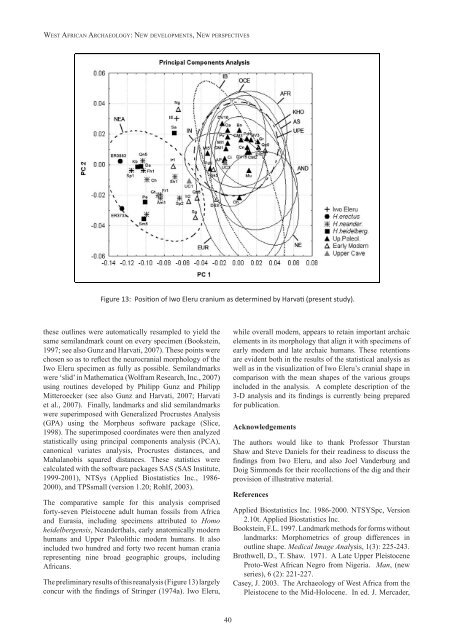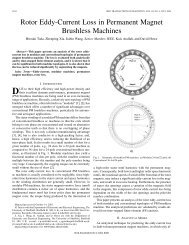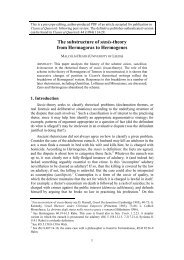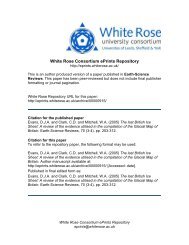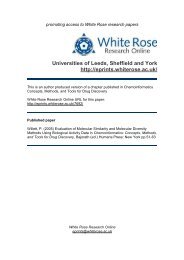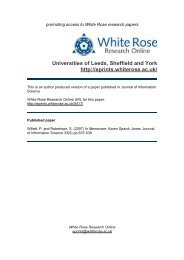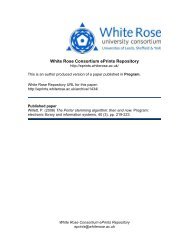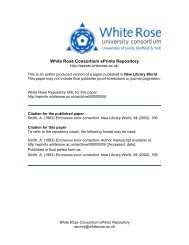The archaeological context of the Iwo Eleru cranium from Nigeria ...
The archaeological context of the Iwo Eleru cranium from Nigeria ...
The archaeological context of the Iwo Eleru cranium from Nigeria ...
Create successful ePaper yourself
Turn your PDF publications into a flip-book with our unique Google optimized e-Paper software.
Figure 13<br />
West AfricAn ArchAeology: neW developments, neW perspectives<br />
Figure 13: Position <strong>of</strong> <strong>Iwo</strong> <strong>Eleru</strong> <strong>cranium</strong> as determined by Harvati (present study).<br />
<strong>the</strong>se outlines were automatically resampled to yield <strong>the</strong><br />
same semilandmark count on every specimen (Bookstein,<br />
1997; see also Gunz and Harvati, 2007). <strong>The</strong>se points were<br />
chosen so as to reflect <strong>the</strong> neurocranial morphology <strong>of</strong> <strong>the</strong><br />
<strong>Iwo</strong> <strong>Eleru</strong> specimen as fully as possible. Semilandmarks<br />
were ‘slid’ in Ma<strong>the</strong>matica (Wolfram Research, Inc., 2007)<br />
using routines developed by Philipp Gunz and Philipp<br />
Mitteroecker (see also Gunz and Harvati, 2007; Harvati<br />
et al., 2007). Finally, landmarks and slid semilandmarks<br />
were superimposed with Generalized Procrustes Analysis<br />
(GPA) using <strong>the</strong> Morpheus s<strong>of</strong>tware package (Slice,<br />
1998). <strong>The</strong> superimposed coordinates were <strong>the</strong>n analyzed<br />
statistically using principal components analysis (PCA),<br />
canonical variates analysis, Procrustes distances, and<br />
Mahalanobis squared distances. <strong>The</strong>se statistics were<br />
calculated with <strong>the</strong> s<strong>of</strong>tware packages SAS (SAS Institute,<br />
1999-2001), NTSys (Applied Biostatistics Inc., 1986-<br />
2000), and TPSsmall (version 1.20; Rohlf, 2003).<br />
<strong>The</strong> comparative sample for this analysis comprised<br />
forty-seven Pleistocene adult human fossils <strong>from</strong> Africa<br />
and Eurasia, including specimens attributed to Homo<br />
heidelbergensis, Neanderthals, early anatomically modern<br />
humans and Upper Paleolithic modern humans. It also<br />
included two hundred and forty two recent human crania<br />
representing nine broad geographic groups, including<br />
Africans.<br />
<strong>The</strong> preliminary results <strong>of</strong> this reanalysis (Figure 13) largely<br />
concur with <strong>the</strong> findings <strong>of</strong> Stringer (1974a). <strong>Iwo</strong> <strong>Eleru</strong>,<br />
40<br />
while overall modern, appears to retain important archaic<br />
elements in its morphology that align it with specimens <strong>of</strong><br />
early modern and late archaic humans. <strong>The</strong>se retentions<br />
are evident both in <strong>the</strong> results <strong>of</strong> <strong>the</strong> statistical analysis as<br />
well as in <strong>the</strong> visualization <strong>of</strong> <strong>Iwo</strong> <strong>Eleru</strong>’s cranial shape in<br />
comparison with <strong>the</strong> mean shapes <strong>of</strong> <strong>the</strong> various groups<br />
included in <strong>the</strong> analysis. A complete description <strong>of</strong> <strong>the</strong><br />
3-D analysis and its findings is currently being prepared<br />
for publication.<br />
Acknowledgements<br />
<strong>The</strong> authors would like to thank Pr<strong>of</strong>essor Thurstan<br />
Shaw and Steve Daniels for <strong>the</strong>ir readiness to discuss <strong>the</strong><br />
findings <strong>from</strong> <strong>Iwo</strong> <strong>Eleru</strong>, and also Joel Vanderburg and<br />
Doig Simmonds for <strong>the</strong>ir recollections <strong>of</strong> <strong>the</strong> dig and <strong>the</strong>ir<br />
provision <strong>of</strong> illustrative material.<br />
References<br />
Applied Biostatistics Inc. 1986-2000. NTSYSpc, Version<br />
2.10t. Applied Biostatistics Inc.<br />
Bookstein, F.L. 1997. Landmark methods for forms without<br />
landmarks: Morphometrics <strong>of</strong> group differences in<br />
outline shape. Medical Image Analysis, 1(3): 225-243.<br />
Brothwell, D., T. Shaw. 1971. A Late Upper Pleistocene<br />
Proto-West African Negro <strong>from</strong> <strong>Nigeria</strong>. Man, (new<br />
series), 6 (2): 221-227.<br />
Casey, J. 2003. <strong>The</strong> Archaeology <strong>of</strong> West Africa <strong>from</strong> <strong>the</strong><br />
Pleistocene to <strong>the</strong> Mid-Holocene. In ed. J. Mercader,


